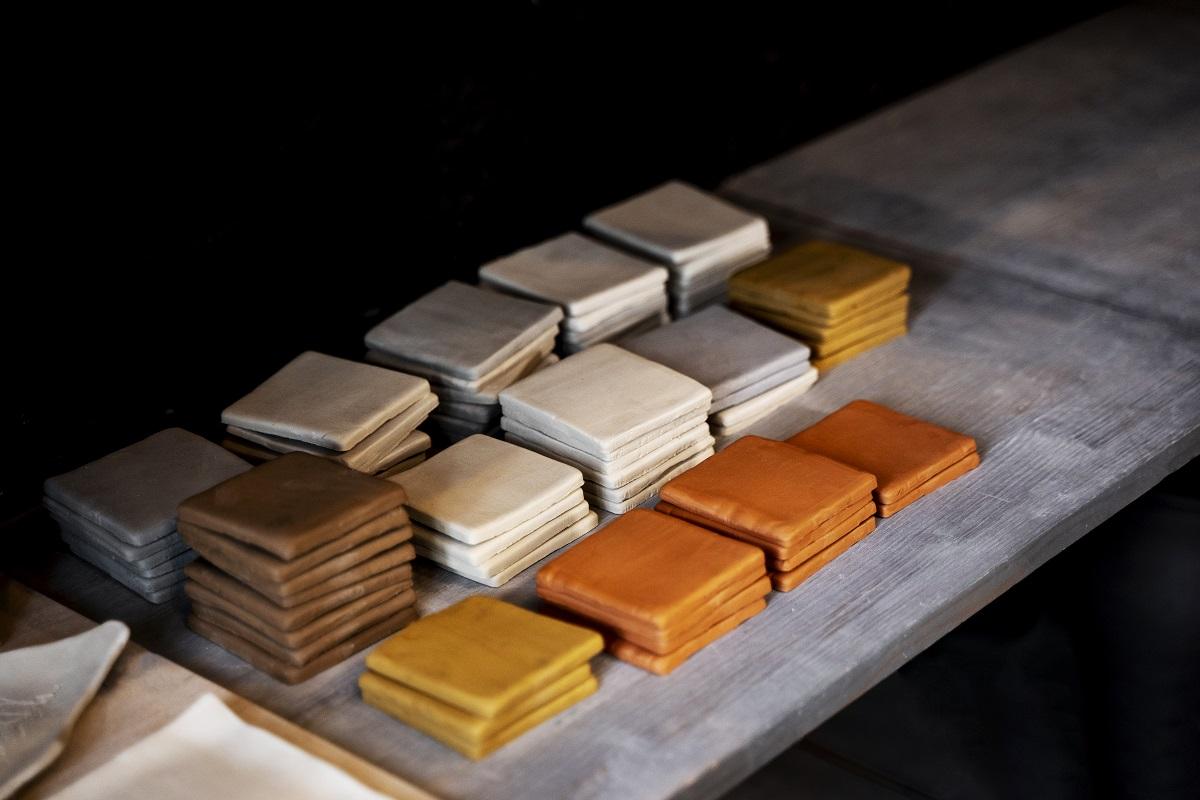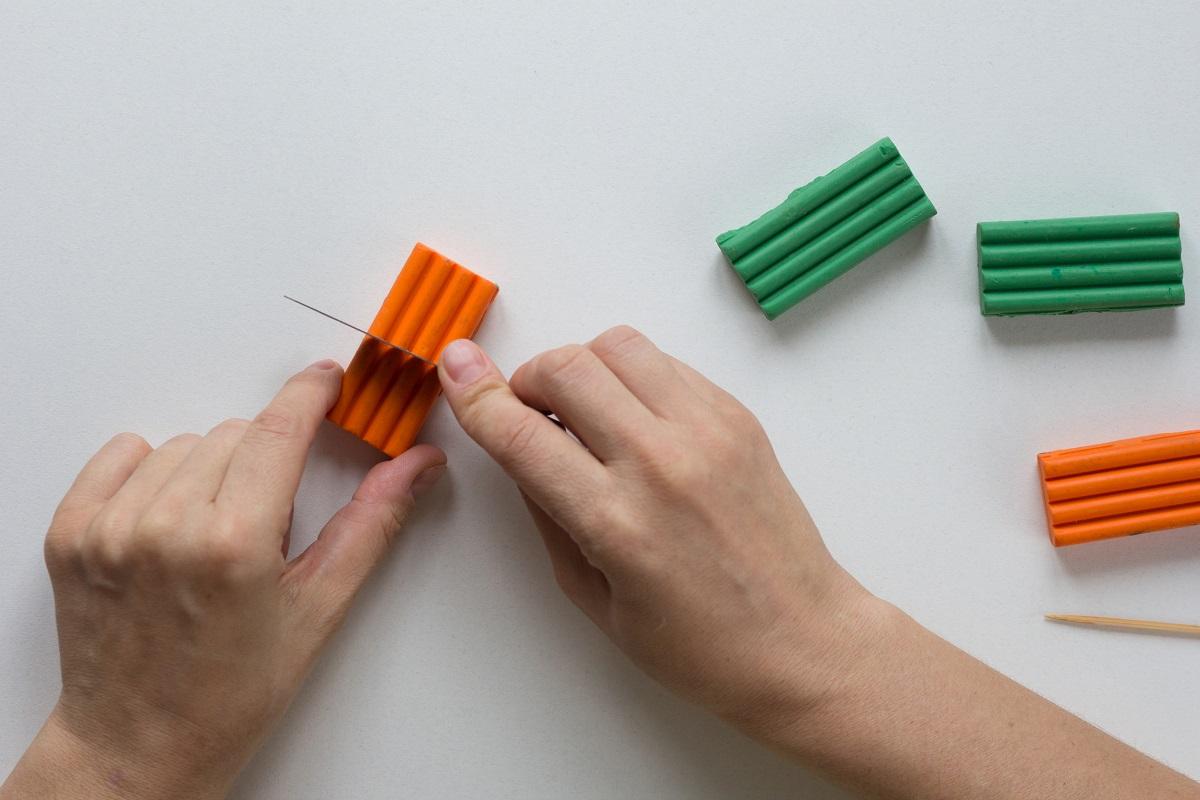Besides coloring books and art projects, clay for sculpting is a unique way to develop your kids’ creative side.

Playing with clay improves hand-eye coordination, teaches play-based learning, and increases self-confidence. Adults can also take time out of their busy schedules to make funky and beautiful sculptures for relaxation.
However, selecting the right clay is critical, and the two best options among all clay types are air dry and polymer clay. In this guide, we have looked at the difference between polymer clay and air dry clay in detail so that you have more information while making sculptures.
What Is Modeling Clay?

Modeling clay comprises a group of malleable products that kids, hobbyists, art students, professionals, including animators and potters, use for sculpting. Among various modeling clays, air-dry clay is probably the most popular or preferred option.
Thanks to its soft and spongy composition, air-dry clay proves suitable for making sculptures and can be molded into any shape. Hence, it is a popular choice, particularly for children's toys and beginner’s art projects.
A sculpture or an art piece made using clay that air dries takes around 1-2 days to set, depending on how thick your art piece is. And once thoroughly air-dried, the clay has a porous texture, which makes it more resistant to breaking.
Another reason this clay is popular among artists is that it comes in many different colors, and you can even use acrylic paint for decorating it.
Pros And Cons Of Air Dry Modeling Clay
Pros
A. Easy To Use
Air-dry clay has a smooth texture and doesn’t need much kneading. You can easily mold, craft, and sculpt funky or unique designs with it on the go. Plus, there’s no need for sculpting tools if you know how to use it.
If it starts to dry as you work, spray a little water on it to make it smooth again. But make sure not to overdo it, as you may end up with cracks in the sculpture.
B. Non-Toxic
The most commonly used air-dry clays, including Jovi and Activa, are all-natural, paper-based, and non-toxic. So, using these will not put you at risk of developing rashes or allergies.
But the ingredients of an air-dry clay vary for different brands, and some contain gluten (like Crayola) which might cause allergic reactions depending on your medical history. Although air-dry clay is deemed safe for children above three years, keep a watchful eye to ensure they don’t put it in their mouths.
C. Best For Beginners
Irrespective of your skill level in sculpting or pottery, you can get started with this clay. Experiment with simple crafts like making air-drying clay earrings, bowls, pinch pots, or trinkets.
And if you want to improve your pottery skills - take a specialized course, read a book, or go online where you will find plenty of information related to air-dry clay.
Cons
A. Not Waterproof
Since air-dry clay is porous, it will eventually absorb water and deteriorate. Plus, sealing the clay won’t help much, as it merely slows down the process, so you can’t use it to make functional mugs, vases, or flower pots.
B. Flammable
When exposed to open fire, air-dry clay does not ignite but rather chars and turns to ash. That’s why making ashtrays with this clay is not a good idea.
C. Fragile
Delicate and small details like the ears and fingers of your dolls, flower petals, or other similar sculptures made with air-dry clay are fragile and break off easily. Even a careless touch of the finger can damage your sculpture.
What you can do is use armature, like wire for petals and fingers, or a sealant to make your project more durable and stronger.
What Is Polymer Clay?
Polymer clay is hardened modeling clay, known for its quality, simplicity, and versatility. The clay, made from Polyvinyl Chloride (PVC), is simple to use and becomes malleable and soft once you begin sculpting.
After you’ve finished making your clay sculpture, you need to cure or bake it. The best part about it is you won’t need a professional kiln fire, as your home oven works just fine.
Polymer clay is available in several colors and you can use it to make anything, be it keychains, beads, figurines, jewelry pieces, and other sculptures.
Pros And Cons Of Polymer Clay
Pros
A. Doesn’t Dry
A unique blend of synthetic polymers goes into a polymer clay, so it doesn’t dry out, irrespective of how long you keep it outside. This makes it suitable for those who don’t like sculpting at a stretch and want flexibility while working on their project.
B. Repels Dust
You can leave your clay sculptures outside without worrying about them hardening or gathering a layer of dust. Polymer clay is dust-resistant to a degree, and your sculpture remains cleaner and brighter much longer.
It is also a big bonus for those who work on complex projects that can’t be protected or covered.
C. No Kiln Required
As already mentioned, polymer clays don’t need a kiln fire to harden, and a home oven works perfectly fine. Compared to other modeling clays that need to be heated at high temperatures before they are ready, polymer clay only needs temperatures between 265 and 276 degrees Fahrenheit.
Once polymer clay is fired up in an oven, its hardness is somewhere between air-dry and natural clay. Also, a properly heated polymer clay is slightly flexible even after it has hardened.
Cons
A. Need Sculpting Tools
Polymer clay is a bit tricky to work with compared to air-dry clay, and you might need specialized tools for sculpting. Although kneading and shaping polymer clay can be done by hand, tools like rubbing plates, press tools, clay cutters, and rollers are essential for detailing.
B. Not Safe For Children
Although it is unlikely to cause allergies in adults, this might not be the case with children. The clay polymers may not suit kids’ highly sensitive skin and could lead to rashes or redness.
Not to mention, kids tend to bite anything they find appealing, which you can’t afford with any form of clay, let alone polymer clay.
Modeling Clay Vs Polymer Clay Frequently Asked Questions ?
Can you mix polymer clay and air-dry clay?
Yes, you can, but it’s difficult for polymer clay to stick to absorbent surfaces like air-dry clay. Sometimes, you can just squeeze polymer clay over the latter.
How long does an air-dry clay last?
If you store air-dry clay properly, it can last a very long time. But for that we recommend wrapping the unused clay in a Ziploc or plastic bag before putting it in an airtight container.

Modeling Clay Vs Polymer Clay Final Verdict
When it comes to air drying clay vs polymer clay, which is a better choice for making sculptures? Our decision is in favor of polymer clay because it is more resistant to water, heat, or breaking, while offering greater flexibility when sculpting.
But for kids just learning the art of clay sculpting, they should start with air-dry clay. Polymer clay is a bit tricky to work with compared to air-dry clay, so you will need to enroll them in various courses or pottery classes available online.
The bottom line is to let kids have fun while making unique clay crafts!
